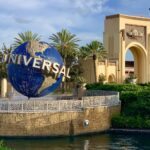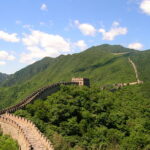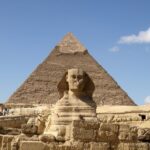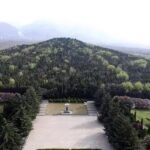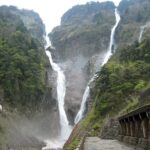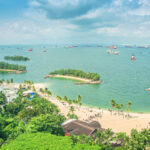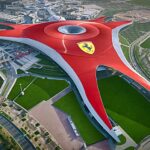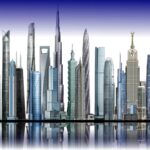
Hong Kong is a city and special administrative region of China on the eastern Pearl River Delta in South China. With over 7.5 million residents of various nationalities in a 1,104-square-kilometre (426 sq mi) territory, Hong Kong is one of the most densely populated places in the world. Hong Kong is also one of the three global financial centres and one of the most developed cities in the world. Known as the land of Buddhist monasteries and western architecture, there are some amazing places to visit in Hong Kong such as Victoria Peak, Central, Disneyland, Ocean Park, and more. An amalgamation of Chinese and western culture, Hong Kong is where the east meets the west. (Source from Wikipedia)


1. Temple Street Night Market
Temple Street is a street market that many tourists like to visit. It is close to the attractions that draw tourists by the millions to the Tsim Sha Tsui area each year. People look for street bargains or to have some inexpensive Chinese food. The Temple Street Night Market is one of Hong Kong's tourist shopping highlights.
![temple-street-night-market-istock-Nikada-1280x600[1]](https://hobbymart.net/wp-content/uploads/2022/05/temple-street-night-market-istock-Nikada-1280x6001-1-768x360.jpg)
![Do-in-hongkong-Temple-Street-Night-market-1-768x414[1]](https://hobbymart.net/wp-content/uploads/2022/05/Do-in-hongkong-Temple-Street-Night-market-1-768x4141-1.png)
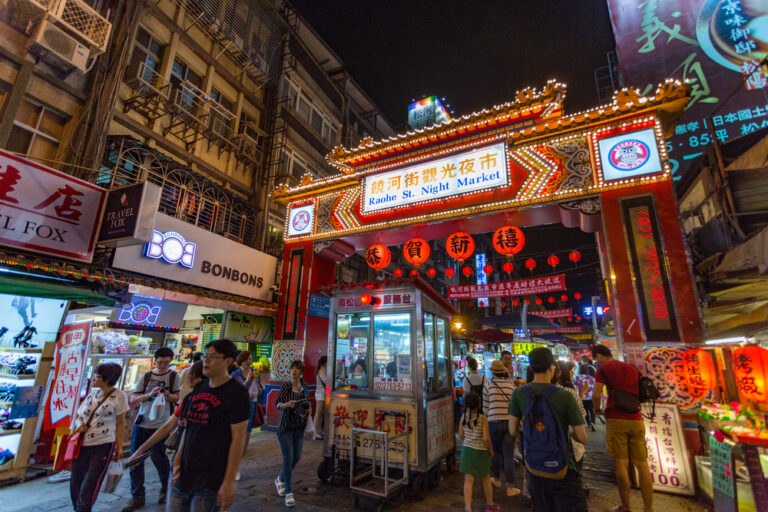

2. Victoria Peak
Victoria Peak is a hill on the western half of Hong Kong Island. It is also known as Mount Austin, and locally as The Peak. With an elevation of 552 metres (1,811 ft), it is the highest hill on Hong Kong Island, ranked 29 in terms of elevation in Hong Kong (Tai Mo Shan is the highest point in Hong Kong with an elevation of 957 metres (3,140 ft)). It is a major tourist attraction offering views of Central, Victoria Harbour, Lamma Island and the surrounding islands.
![victoria-peak-hike-13d[1]](https://hobbymart.net/wp-content/uploads/2022/05/victoria-peak-hike-13d1-768x384.jpg)
![Victoria-Peak-5[1]](https://hobbymart.net/wp-content/uploads/2022/05/Victoria-Peak-51.jpg)

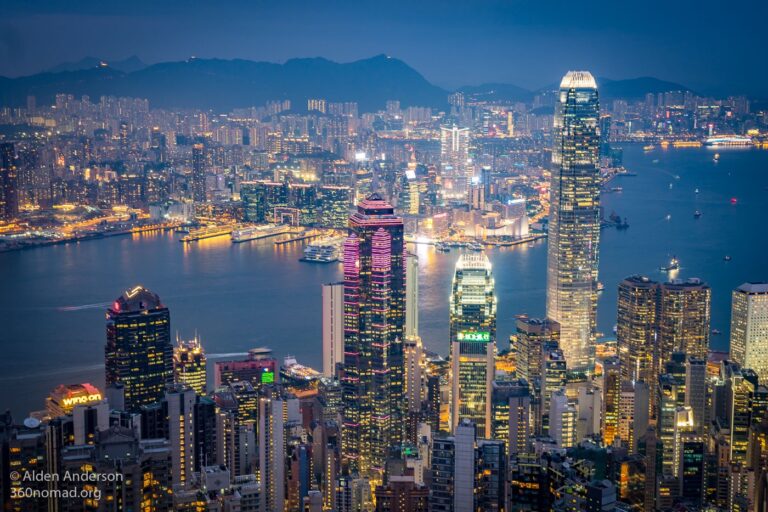

3. A Symphony of Lights
A Symphony of Lights (Chinese: 幻彩詠香江) is a daily light and sound show in Hong Kong. It is the world's largest permanent light and sound show according to Guinness World Records. As of 2017, there are 42 participating buildings in the show.
![45486_HongKong_SymphonyofLights_d14-89[1]](https://hobbymart.net/wp-content/uploads/2022/05/45486_Hong20Kong_Symphony20of20Lights_d14-891.jpg)
![Hong-Kong-Symphony-of-Lights[1]](https://hobbymart.net/wp-content/uploads/2022/05/Hong-Kong-Symphony-of-Lights1-768x512.jpg)
![symphony-of-lights-laser-light-show-hong-kong_Fotor[1]](https://hobbymart.net/wp-content/uploads/2022/05/symphony-of-lights-laser-light-show-hong-kong_Fotor1-768x432.jpg)
![Winter-Hong-Kong-Pulse-Light-Show-ArdorAsia[1]](https://hobbymart.net/wp-content/uploads/2022/05/Winter-Hong-Kong-Pulse-Light-Show-ArdorAsia1-768x513.jpg)

4. Man Mo Temple
Man Mo Temple or Man Mo Miu is a temple for the worship of the Civil or Literature God Man Tai (文帝) / Man Cheong (文昌) and the Martial God Mo Tai (武帝) / Kwan Tai (關帝). The two Deities were popularly patronized by scholars and students seeking progress in their study or ranking in the civil examinations in the Ming and Qing dynasties. There are several Man Mo temples in Hong Kong, the best known of which is the temple in Sheung Wan.
![Man-Mo-Inside-compressor[1]](https://hobbymart.net/wp-content/uploads/2022/05/Man-Mo-Inside-compressor1-768x507.jpg)
![hollywoodrd_09_hktb-baec204cefd044f1b8340e7b733fb0a9[1]](https://hobbymart.net/wp-content/uploads/2022/05/hollywoodrd_09_hktb-baec204cefd044f1b8340e7b733fb0a91-768x512.jpg)
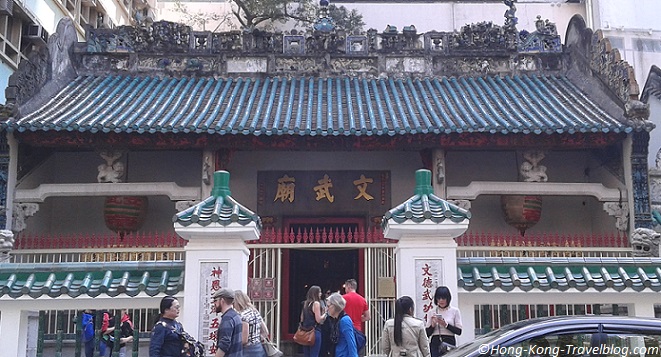
![16876004591_fabcef4ae1_b[1]](https://hobbymart.net/wp-content/uploads/2022/05/16876004591_fabcef4ae1_b1-768x521.jpg)

5. Tian Tan Buddha
The Big Buddha is a large bronze statue of Buddha, completed in 1993, and located at Ngong Ping, Lantau Island, in Hong Kong. The statue is sited near Po Lin Monastery and symbolises the harmonious relationship between man and nature, people and faith. It is a major centre of Buddhism in Hong Kong, and is also a tourist attraction. The statue's base is a model of the Altar of Heaven or Earthly Mount of Tian Tan, the Temple of Heaven in Beijing. One of the five large Buddha statues in China, it is enthroned on a lotus on top of a three-platform altar. Surrounding it are six smaller bronze statues known as "The Offering of the Six Devas" that are posed offering flowers, incense, lamp, ointment, fruit, and music to the Buddha. These symbolise the Six Perfections of generosity, morality, patience, zeal, meditation, and wisdom, all of which are necessary for enlightenment.

![tian-tan-buddha-hong-kong-hong-kong-the-worlds-largest-statue-1560872702pc48l[1]](https://hobbymart.net/wp-content/uploads/2022/05/tian-tan-buddha-hong-kong-hong-kong-the-worlds-largest-statue-1560872702pc48l1-768x512.jpg)

![tian-tan-big-buddha-hong-kong-lantau-island-667[1]](https://hobbymart.net/wp-content/uploads/2022/05/tian-tan-big-buddha-hong-kong-lantau-island-6671-768x551.jpg)
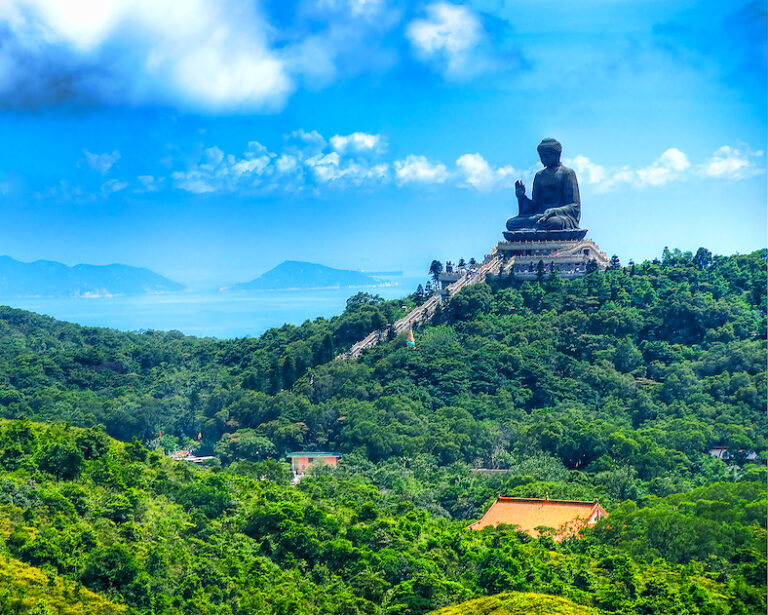
![IMG_5952[1]](https://hobbymart.net/wp-content/uploads/2022/05/IMG_59521-768x512.jpg)

6. Ten Thousand Buddhas Monastery
The Ten Thousand Buddhas Monastery (Chinese: 萬佛寺; pinyin: wàn fó sì; Jyutping: maan6 fat6 zi6) is a mid-20th century Buddhist temple located in Sha Tin, Hong Kong, at 220 Pai Tau Village. Its designation as a monastery is actually a misnomer because there are no monks residing at the complex, which is managed solely by laypersons. Both the main temple building and the pagoda are listed as Grade III historic buildings by the Government of Hong Kong.
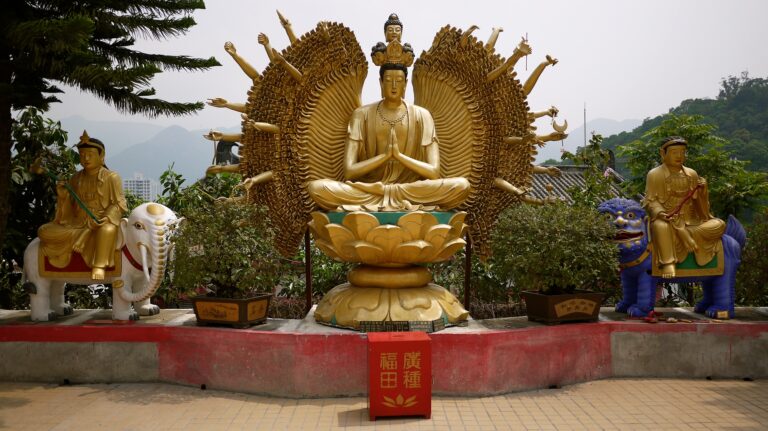
![ten-thousand-buddhas-monastery-12[1]](https://hobbymart.net/wp-content/uploads/2022/05/ten-thousand-buddhas-monastery-121-768x509.jpg)
![ten-thousand-buddhas-monastery-7[1]](https://hobbymart.net/wp-content/uploads/2022/05/ten-thousand-buddhas-monastery-71-768x509.jpg)
![Ten-Thousand-Buddhas-Monastery-55057[1]](https://hobbymart.net/wp-content/uploads/2022/05/Ten-Thousand-Buddhas-Monastery-550571-768x432.jpg)
7. Nathan Road
Nathan Road is the main thoroughfare in Kowloon, Hong Kong, aligned south–north from Tsim Sha Tsui to Sham Shui Po. It is lined with shops and restaurants and throngs with visitors, and was known in the post–World War II years as the Golden Mile, a name that is now rarely used. It starts on the southern part of Kowloon at its junction with Salisbury Road, a few metres north of Victoria Harbour, and ends at its intersection with Boundary Street in the north. Portions of the Kwun Tong and Tsuen Wan lines (Prince Edward, Mong Kok, Yau Ma Tei, Jordan and Tsim Sha Tsui) run underneath Nathan Road. The total length of Nathan Road is about 3.6 kilometres (2.2 mi).
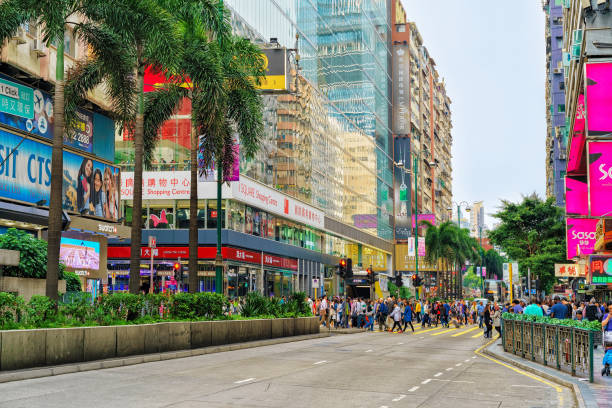
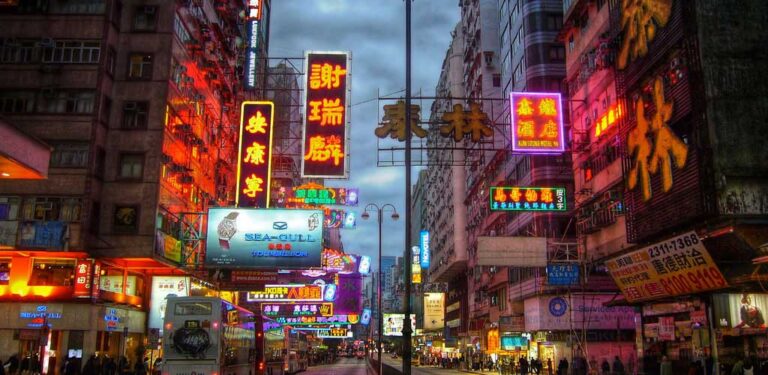
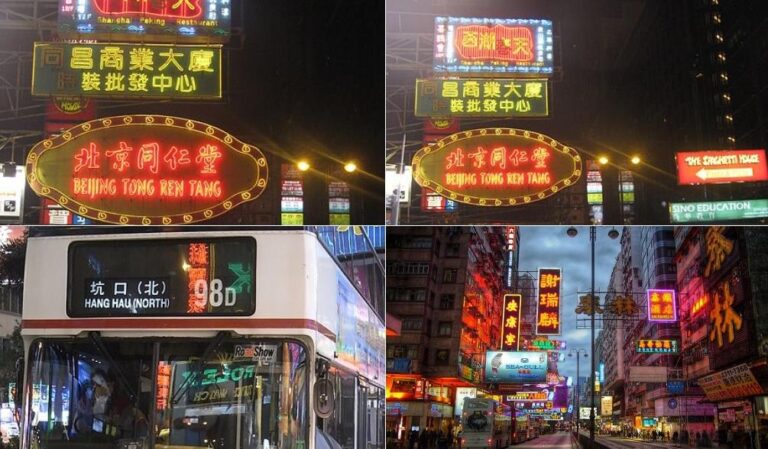
![HK_Kowloon_Nathan_Road_20190924174622[1]](https://hobbymart.net/wp-content/uploads/2022/05/HK_Kowloon_Nathan_Road_201909241746221-768x576.jpg)
8. Lan Kwai Fong
Lan Kwai Fong (often abbreviated as LKF) is a small square of streets in Central, Hong Kong. The area was dedicated to hawkers before the Second World War, but underwent a renaissance in the mid-1980s. It is now a popular expatriate haunt in Hong Kong for drinking, clubbing and dining. The street Lan Kwai Fong is L-shaped with two ends joining with D'Aguilar Street. Lan Kwai Fong as an area is defined by D'Aguilar Street and the smaller lane, Lan Kwai Fong, an L-shaped, cobble-stoned lane. Both streets turn 90 degrees to form a rectangle. It is near the Mid-Levels. Its eating and drinking establishments are considered upmarket in price and the area is also considered a tourist spot. From the west side of the rectangle, Wo On Lane and Wing Wah Lane extend to host several more spots for drinks and food. The area arguably extends to Wellington Street and Wyndham Street, through to the Hong Kong Fringe Club. It is also home to a small number of art galleries.
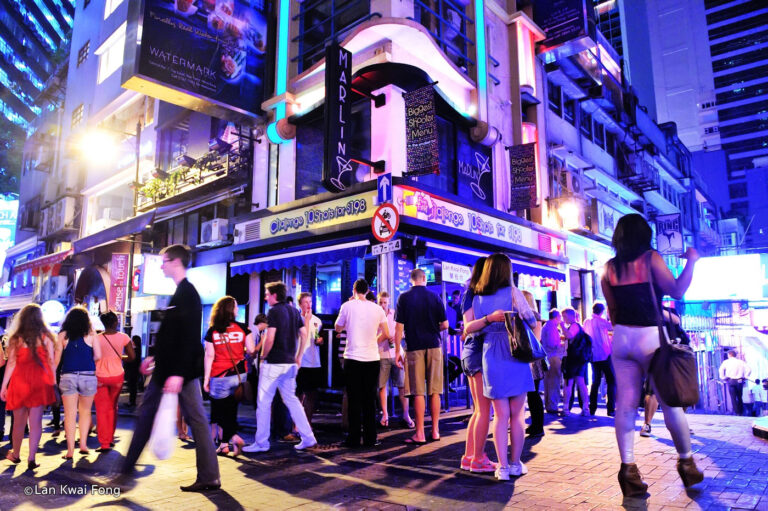
![GettyImages-541248194-58349d983df78c6f6a4c7df5[1]](https://hobbymart.net/wp-content/uploads/2022/05/GettyImages-541248194-58349d983df78c6f6a4c7df51-768x512.jpg)
![lan-kwai-fong-cover[1]](https://hobbymart.net/wp-content/uploads/2022/05/lan-kwai-fong-cover1.jpg)
![allan-jonathan-zeman-4[1]](https://hobbymart.net/wp-content/uploads/2022/05/allan-jonathan-zeman-41-768x513.jpg)

9. Ocean Park
Ocean Park Hong Kong, commonly known as Ocean Park, is a marine mammal park, oceanarium, animal theme park and amusement park situated in Wong Chuk Hang and Nam Long Shan in the Southern District of Hong Kong. It is the second largest theme park in Hong Kong, after Hong Kong Disneyland, as well as the largest theme park in Hong Kong by area. It is also the second oldest theme park in Hong Kong, after the now-defunct Lai Chi Kok Amusement Park which closed on 31 March 1997, four months before the 1997 handover.
![OceanPark-Hong-Kong[1]](https://hobbymart.net/wp-content/uploads/2022/05/OceanPark-Hong-Kong1-768x512.jpg)
![00069602-25390[1]](https://hobbymart.net/wp-content/uploads/2022/05/00069602-253901-768x614.jpg)
![p6ozsrfsdj8krbnvevln[1]](https://hobbymart.net/wp-content/uploads/2022/05/p6ozsrfsdj8krbnvevln1-768x355.jpg)
![OCEANPARKSKIP9[1]](https://hobbymart.net/wp-content/uploads/2022/05/OCEANPARKSKIP91-768x400.jpg)
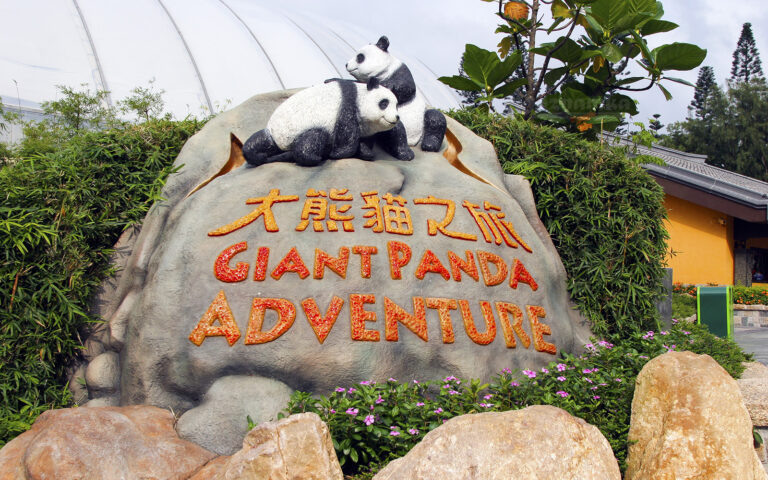
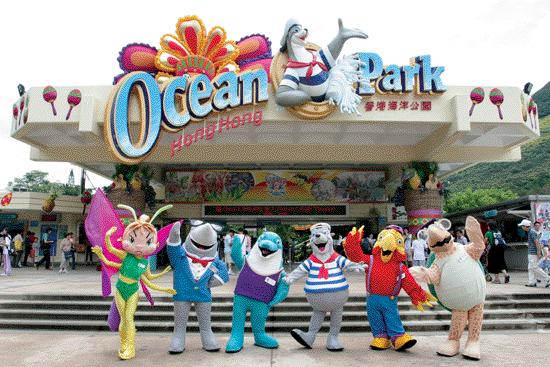

10. Hong Kong Disneyland
Hong Kong Disneyland (Chinese: 香港迪士尼公園) (local nickname HKDL; also known as HK Disneyland) is a theme park located on reclaimed land in Penny's Bay, Lantau Island. It is located inside the Hong Kong Disneyland Resort and it is owned and managed by Hong Kong International Theme Parks. It is the largest theme park in Hong Kong, followed by Ocean Park Hong Kong. Hong Kong Disneyland was opened to visitors on Monday, 12 September 2005 at 13:00 HKT. Disney attempted to avoid problems of cultural backlash by incorporating Chinese culture, customs and traditions when designing and building the resort, including adherence to the rules of feng shui. Notably, a bend was put in a walkway near the Hong Kong Disneyland Resort entrance so good qi energy would not flow into the South China Sea.
![Castle-of-Magical-Dreams-Hong-Kong-Disneyland-3[1]](https://hobbymart.net/wp-content/uploads/2022/05/Castle-of-Magical-Dreams-Hong-Kong-Disneyland-31-768x512.jpg)
![Hong-Kong-Disneyland-An-Insider-Guide-for-Buying-Tickets-Rides-Dining[1]](https://hobbymart.net/wp-content/uploads/2022/05/Hong-Kong-Disneyland-An-Insider-Guide-for-Buying-Tickets-Rides-Dining1-768x512.jpg)
![hong-kong-disneyland-night-castle-1224x765[1]](https://hobbymart.net/wp-content/uploads/2022/05/hong-kong-disneyland-night-castle-1224x7651-1-768x480.png)
![Disney-HK-e1523266456708[1]](https://hobbymart.net/wp-content/uploads/2022/05/Disney-HK-e15232664567081-768x419.jpg)
![82418ab97612d9f890b336b6bb147fcf-01-1068x681[1]](https://hobbymart.net/wp-content/uploads/2022/05/82418ab97612d9f890b336b6bb147fcf-01-1068x6811-1-768x490.jpeg)
![maxresdefault[1]](https://hobbymart.net/wp-content/uploads/2022/05/maxresdefault1-6-768x432.jpg)
11. Happy Valley Racecourse
Horse racing is a popular legal activity in Hong Kong, and the Happy Valley Racecourse is managed by a non-profit charitable organization that aims to provide entertainment and social activity. As many as 40,000 people go on Wednesday nights during the racing season that extends from September to early July. Though it is less modern and lower-scale than Hong Kong’s world-class Shatin Racecourse, it is apparently more fun. The residential hi-rise buildings are lit up with dazzling color for a background for the event. There are some restaurants and bars where people can have meals and get snacks, and beer is relatively cheap. To attract the crowds, entrance ticket prices are only 10 HKD or about 1.50 USD, and the minimum bet is 10 HKD. The arena has sophisticated computerized betting, and races are shown live on a gigantic screen.
12. Golden Bauhinia Square
The Golden Bauhinia Square is an open area in Wan Chai, Hong Kong. The square was named after the giant statue of a golden Bauhinia blakeana at the centre of the area, situated outside the Hong Kong Convention and Exhibition Centre, where the ceremonies for the handover of Hong Kong and the establishment of the Hong Kong Special Administrative Region were held in July 1997. A flag-raising ceremony is held every day at 8:00 am. It is considered a tourist attraction. The sculpture, a gilded flower bauhinia, is six metres high. The major part is composed of a bauhinia on a base of red granite pillar on a pyramid.

13. Wong Tai Sin Temple
Wong Tai Sin Temple is a well known shrine and tourist attraction in Hong Kong. It is dedicated to Wong Tai Sin, or the Great Immortal Wong. The 18,000 m2 (190,000 sq ft) Taoist temple is famed for the many prayers answered: "What you request is what you get" (有求必應) via a practice called kau chim. The temple is located on the southern side of Lion Rock in the north of Kowloon.
14. Lamma Island
Lamma Island is the third largest island in Hong Kong. Administratively, it is part of the Islands District. Lamma Island is located to the southwest of Hong Kong Island. It is the third largest island of Hong Kong, with an area of 13.55 km2 (5.23 sq mi)[4] and a length of 7 kilometres (4.3 mi). The northern village is called Yung Shue Wan (Banyan Tree Bay) and the eastern village is called Sok Kwu Wan (Rainbow Bay, literally Cable Fishing Net Bay). Few people live on the southern part of Lamma. Access for much of this part is by hiking or private boat. Beaches along Lamma's south-facing edge include Yung Shue Ha Beach and Sham Wan. Mount Stenhouse (山地塘, Shan Tei Tong) is the tallest mountain in Lamma at 353 metres (1,158 feet) above sea level, situated between Sok Kwu Wan and Sham Wan. Unusually shaped rocks can be found all over this mountain, but a grueling hike is necessary to access these.
15. Tai Kwun Centre for Heritage and Arts
Tai Kwun, or the Former Central Police Station Compound (CPS Compound) includes three declared monuments in Central, Hong Kong: the former Central Police Station, the Former Central Magistracy and the Victoria Prison. Surrounded by Hollywood Road, Arbuthnot Road, Chancery Lane and Old Bailey Street, the compound underwent a heritage revitalisation and reopened to the public on 29 May 2018 as "Tai Kwun" (Chinese: 大館), a centre for heritage and arts.

16. Tai Long Wan Beach
Tai Long Wan is a 3 kilometer-wide bay on the east coast of the Sai Kung Peninsula in Sai Kung District, Hong Kong. Considered one of the most beautiful places in Hong Kong, it is a popular surf destination. None of the beaches in the Tai Long Wan area is suitable for swimming because of the presence of strong rip currents year-round, which means swimmers could be pulled into the open sea when caught in a rip current. The beaches are not gazetted and do not offer lifeguard services or shark nets that are common elsewhere in Hong Kong. Numerous drownings have occurred over the years because of the rip currents. Three tiny islands, Tsim Chau (尖洲), Tai Chau (大洲) and Lan Tau Pai (爛頭排), sit picturesquely near the centre of the bay.

17. OZONE
A striking, blue-hued ambience and sweeping Hong Kong view come together at the celebrated OZONE rooftop bar. Small plates, including sushi and maki, and inventive cocktails are served to the soundtrack of a live DJ. As the evening unfolds, the outdoor terrace is the perfect space to look out over the sparkling lights of the city.


